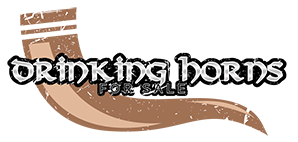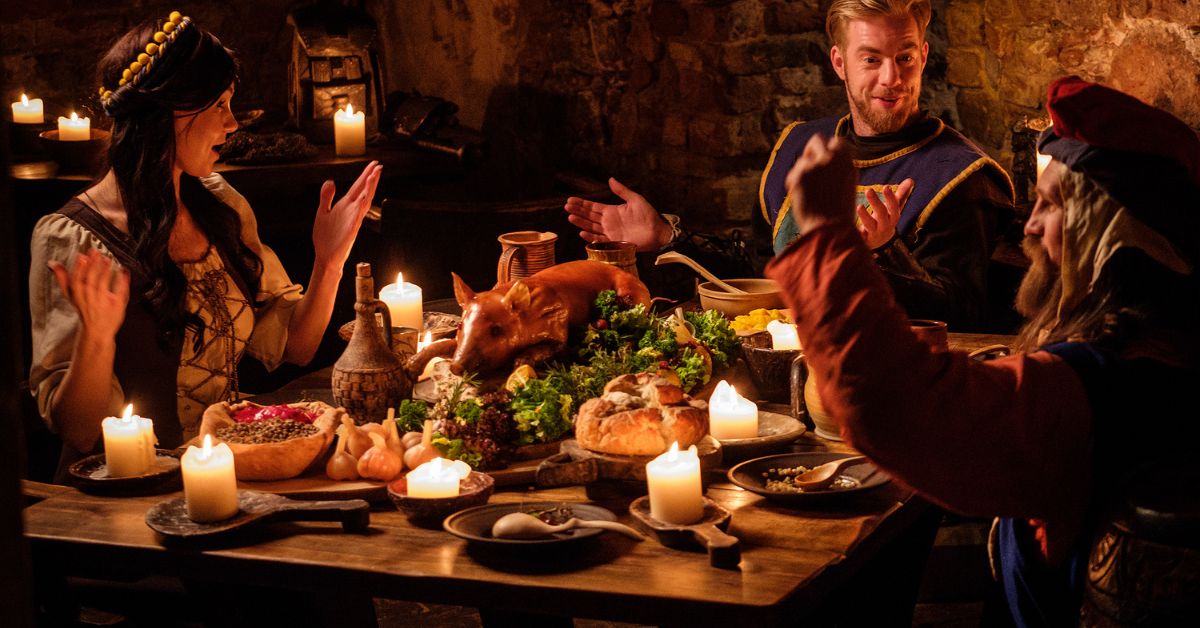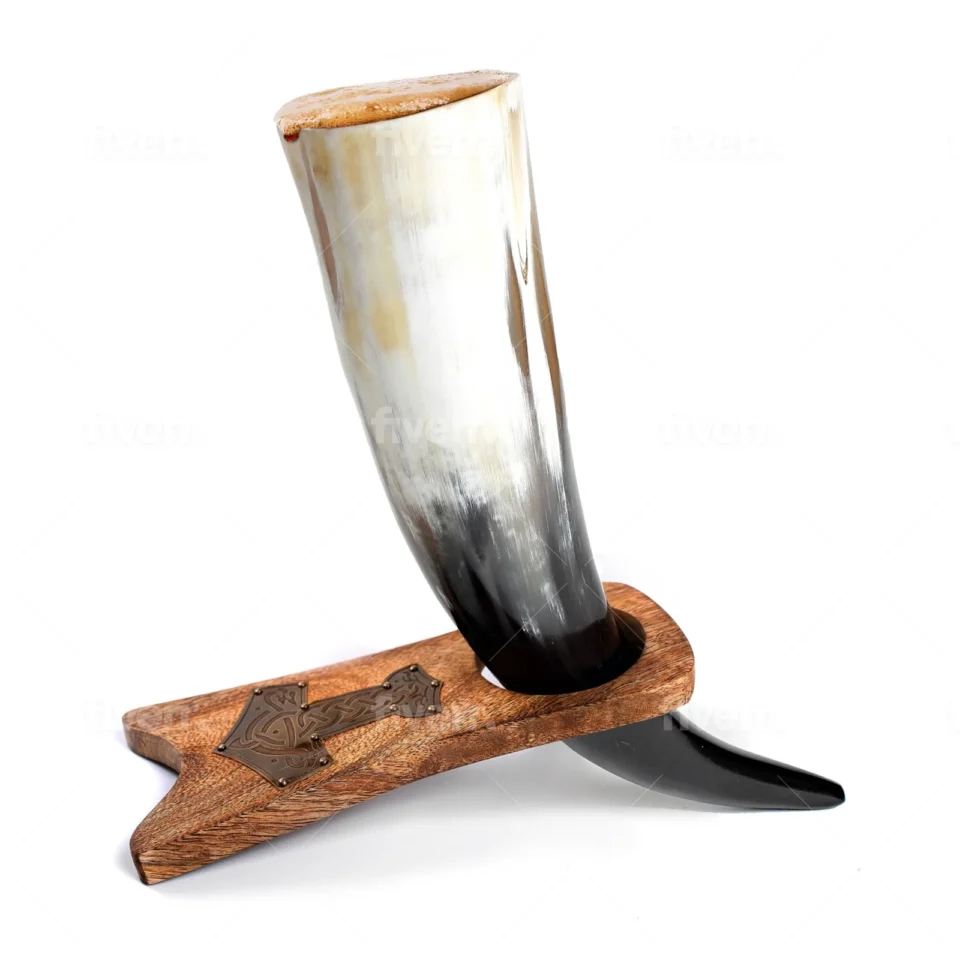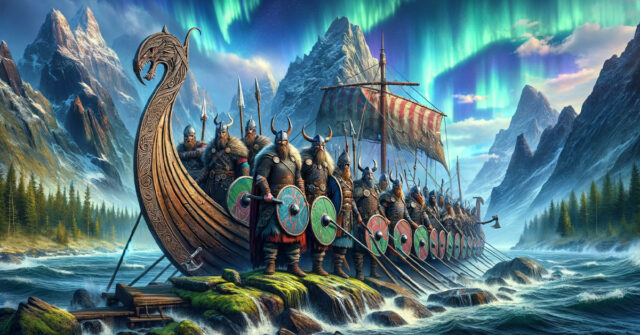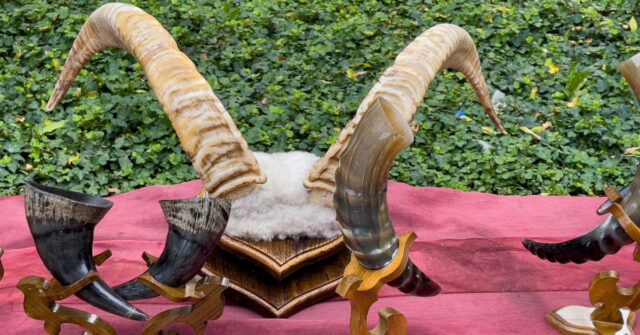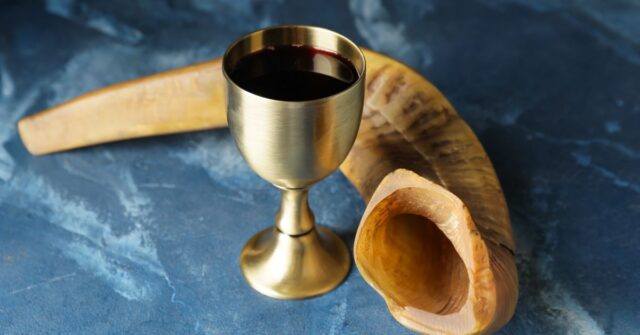Drinking horns hold a special place in the tapestry of medieval European culture, weaving through tales of grand feasts and valiant battles.
These iconic items were more than mere vessels; they were symbols of status, tradition, and artistry that have endured through centuries.
Introduction to Drinking Horns
The drinking horn, often made from the horns of large bovids and decorated with metal or precious stones, served as both a practical drinking tool and a decorative piece in medieval Europe.
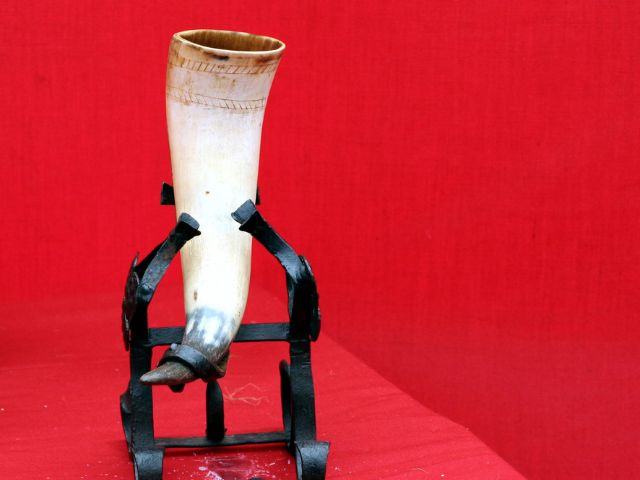

What Are Drinking Horns?
Typically, a drinking horn is crafted from the horn of a bovine, especially cattle or buffalo, carefully hollowed out and polished to serve as a drinking vessel.
Their size and quality could vary significantly, often reflecting the status of the user.
Origins and Historical Background
The use of animal horns as drinking vessels spans back to ancient civilizations, but they gained particular prominence in medieval Europe amidst the rise of feasting culture.
Their presence in epic poems and sagas underlines their importance in social and ceremonial contexts.
The Role of Drinking Horns in Medieval Society
In medieval society, drinking horns were not merely for everyday use but were integral to various socio-cultural rituals, including coronations and alliances.
Symbols of Status and Power
Often adorned with intricate carvings and precious metals, the more elaborate horns were typically owned by individuals of high social standing, such as kings and chieftains, symbolizing power and prestige.
Usage in Daily Life and Special Occasions
While the elite might have used ornately decorated horns, simpler versions were used by the common people during meals and social gatherings, reflecting a broader cultural significance.
Drinking Horns in Courtly and Noble Life
In courtly settings, drinking horns played a role in ceremonial banquets, often used to toast to health and prosperity, sealing pacts and celebrating victories.
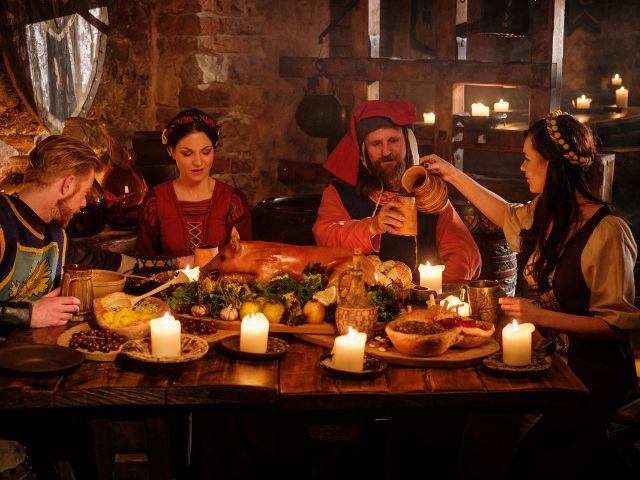

Artistic and Craftsmanship Aspects
The creation of drinking horns was an art that required not only skill but also a deep understanding of materials and a creative vision to produce works that were both functional and beautiful.
Materials and Methods of Creation
Craftsmen selected horns of suitable size and strength, often heating them to shape before polishing and decorating with techniques that could include metalwork and engraving.
Regional Variations in Design
Designs varied significantly across Europe, with Norse horns often featuring runes and Celtic versions displaying intricate knotwork, reflecting diverse artistic traditions.
Famous Artifacts and Their Stories
Some drinking horns are legendary, such as the Horn of Gallehus, decorated with gold and believed to have magical properties. These stories contribute to our understanding of their cultural importance.
Cultural and Mythological Significance
Drinking horns appear frequently in myths and literature, reinforcing their symbolic value and spiritual significance in medieval culture.
Drinking Horns in Mythology and Literature
Epics like Beowulf and sagas from Norse mythology often mention heroes drinking from horns, underscoring their role in rituals and as symbols of heroism.
Sacred and Ceremonial Uses
These vessels were sometimes used in religious ceremonies and believed to contain drinks that could connect the earthly realm with the divine.
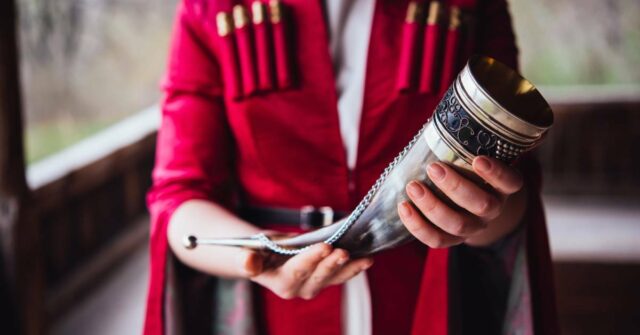

Social Dynamics and Drinking Horns
Drinking horns also facilitated social bonding through shared rituals and collective participation in drinking, a pivotal aspect of medieval social life.
The Role of Drinking Horns in Feasts and Festivities
During large feasts, the passing of a horn, often filled with ale or mead, was a gesture of hospitality and mutual respect among participants.
Drinking Games and Social Bonding
Competitive drinking games using horns could enhance camaraderie and were a popular form of entertainment.
Decline and Legacy of Drinking Horns
Although the use of drinking horns declined with the advent of glass and pottery vessels, their influence persists in modern times, reflecting a fascination with medieval culture and craftsmanship.
Reasons for Decline in Popularity
With advancements in material technology and changes in dining etiquette, the practical use of drinking horns faded, but they remain a symbol of a bygone era.
The Legacy and Revival in Modern Times
Today, drinking horns are seen in historical reenactments and popular media, capturing the romantic spirit of medieval times and continuing to inspire interest in historical traditions.
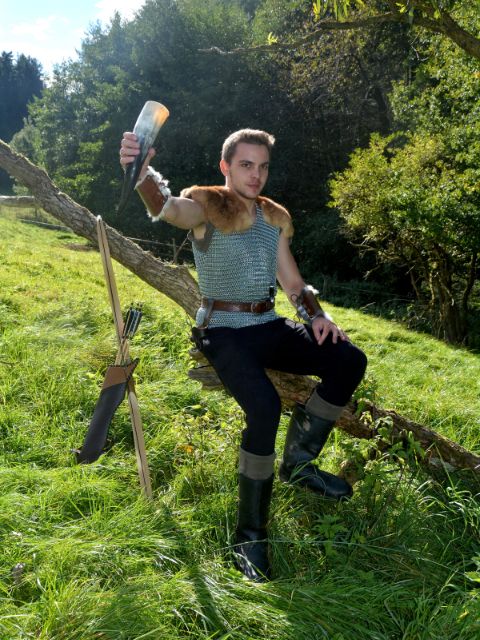

Conclusion
The enduring allure of drinking horns in contemporary culture underscores their significant role in medieval life, serving as both functional objects and potent symbols of power and community.
This exploration into the cultural significance of drinking horns reveals a rich history interwoven with art, society, and mythology, offering a fascinating glimpse into medieval European life.
